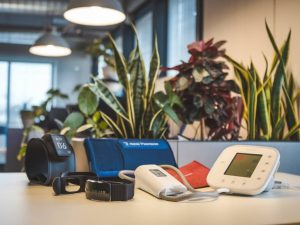Choosing the right health monitoring system for your workforce is like finding the perfect recipe for a well-balanced meal—it needs to be nutritious, tailored to individual needs, and, most importantly, it should leave everyone feeling satisfied and stress-free. With a myriad of options available, selecting the most suitable system can seem daunting, but fear not! Let’s embark on a journey together to ensure your workplace wellness is at its peak.
Understanding the Importance of Health Monitoring in the Workplace
Before diving into specifics, let’s reflect: why focus on workplace health monitoring? In our fast-paced world, ensuring your team’s well-being is paramount. Health monitoring systems can help identify potential risks early, reduce absenteeism, and enhance overall productivity. Imagine a workplace where stress is minimized and employees feel valued—sounds like a dream, right?
Identifying Your Workforce’s Unique Needs
No two workplaces are the same, which means a cookie-cutter approach simply won’t do. Start by assessing the unique needs of your team. Are they desk warriors prone to strains and stress, or are they more dynamic, requiring monitoring in a more mobile environment? Understand the demographics, the nature of the work, and the specific health risks associated with it. Have an open dialogue with employees—engage them, and be transparent about the benefits they might gain.
Types of Health Monitoring Systems
This is where the fun begins: exploring the variety of systems available. Here’s a taste of what’s out there:
- Wearable Devices: These nifty gadgets are perfect for real-time health data tracking. From heart rate monitors to step counters, wearables provide insights into physical activity levels, sleep patterns, and even stress levels.
- Telehealth Platforms: Ideal for remote and hybrid workers, telehealth offers easy access to healthcare professionals without leaving the home office.
- Workplace Health Stations: These stations can be installed at the workplace and are equipped with tools like blood pressure monitors and BMI calculators, promoting proactive health management.
Key Features to Consider
When narrowing down your options, focus on features that align with your goals and the insights gathered from your employees. Ask yourself: does the system offer real-time data? Is it user-friendly? What about data privacy—how secure is it? It’s crucial that the selected system integrates seamlessly with existing workplace practices. Bonus points if it offers customization to cater to individual health needs.
Engaging Employees with Health Monitoring
Once the system is in place, the real magic happens when employees actively engage with it. Consider introducing challenges or incentives to motivate participation. A step challenge could be just the incentive your team needs to rally together! Also, provide educational sessions to ensure everyone understands how to use the technology effectively.
Overcoming Potential Challenges
Implementing a health monitoring system can come with hurdles—resistance to change, privacy concerns, and the learning curve associated with new technology. Address these proactively. Establish clear communication about how data will be used and the benefits to be gained. Encourage feedback and be open to making adjustments as required.
The Role of Leadership in Health Monitoring
Leadership sets the tone for workplace wellness. Encourage leaders to model healthy habits and actively participate in using the health monitoring system. This creates a ripple effect, making employees more likely to engage and embrace the initiative. The more they see it in action from the top, the more likely they are to follow suit.
Keeping an Eye on Innovations and Trends
The world of healthcare technology is ever-evolving. Stay informed about the latest trends and innovations. Regularly review your health monitoring systems to ensure they continue to meet your workforce’s needs. Being adaptable and willing to upgrade or adjust will keep your wellness program fresh and effective.
In closing, selecting the right health monitoring system is akin to crafting a personalized wellness journey for your team. It’s about understanding their needs, choosing the best tools, and fostering a culture of engagement and well-being. Here’s to a healthier, happier workplace—and to you, for taking the first step in that direction!






More Stories
Corporate wellness programs: how to integrate health monitoring devices?
What corporate health technologies can boost employee well-being?
Workplace health: what are the benefits of using recycled water?